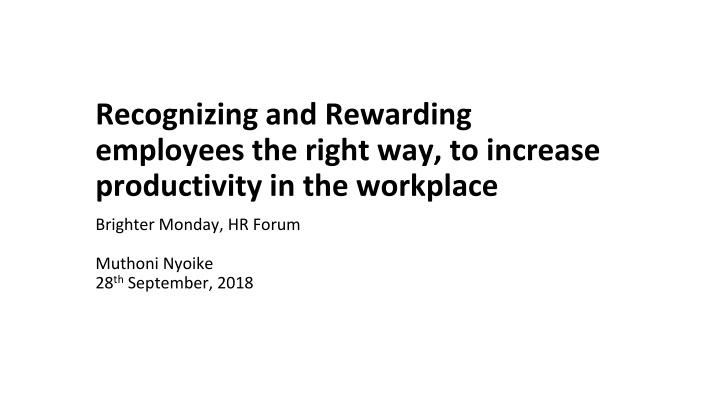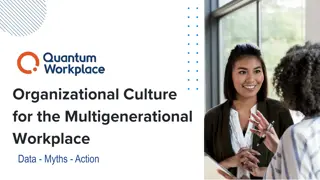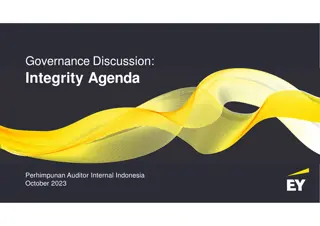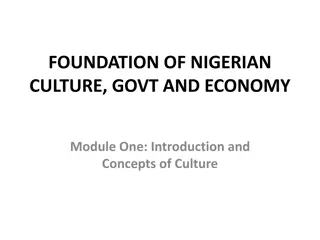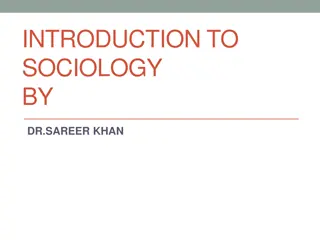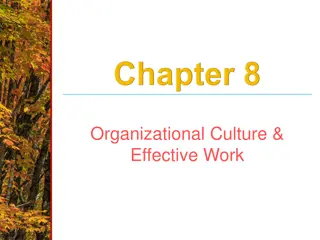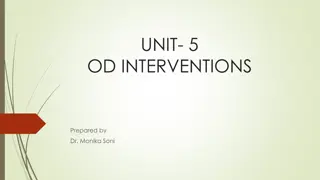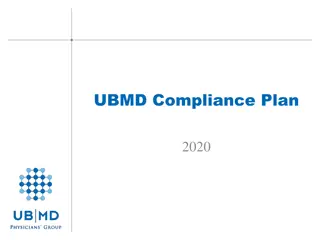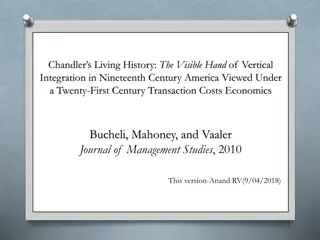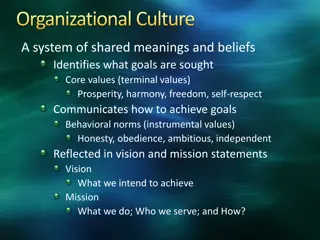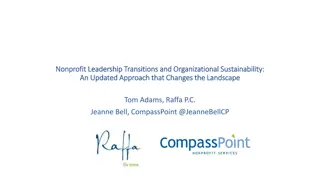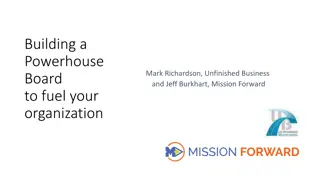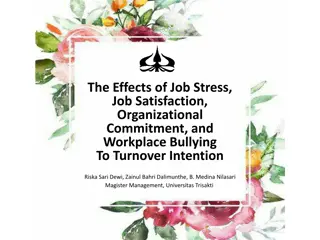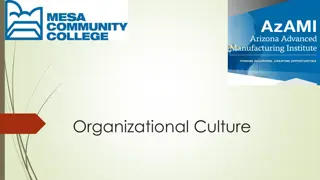Building a Compliance Culture for Organizational Success
Recognizing and rewarding employees the right way can increase productivity in the workplace. Compliance is crucial for organizations to align with laws, regulations, and ethical standards. Understanding what drives compliance and how culture influences it is key. Building the right culture involves promoting good behaviors, aligning with ethics, and rewarding positive actions to foster a compliant environment.
Download Presentation

Please find below an Image/Link to download the presentation.
The content on the website is provided AS IS for your information and personal use only. It may not be sold, licensed, or shared on other websites without obtaining consent from the author.If you encounter any issues during the download, it is possible that the publisher has removed the file from their server.
You are allowed to download the files provided on this website for personal or commercial use, subject to the condition that they are used lawfully. All files are the property of their respective owners.
The content on the website is provided AS IS for your information and personal use only. It may not be sold, licensed, or shared on other websites without obtaining consent from the author.
E N D
Presentation Transcript
Recognizing and Rewarding employees the right way, to increase productivity in the workplace Brighter Monday, HR Forum Muthoni Nyoike 28thSeptember, 2018
What is compliance? Compliance means conforming to a rule, such as a specification, policy, standard or law. Regulatory compliance describes the goal that organizations aspire to achieve in their efforts to ensure that they are aware of and take steps to comply with relevant laws, policies, and regulations. ~ Wikipedia
Why do you need a compliance program?? To prevent misconduct. To detect misconduct. To align corporate policies with laws, rules, and regulations. To protect the organization from risk exposure (regulatory / financial / compliance). To protect brand image and reputation. To build a sustainable business (ethical business decisions).
How does culture influence compliance? In a survey of over 2 million employees responses on corporate culture and misconduct, the average compliance program has improved perceptions of culture by less than 1% since the late 2000s, which translates into little decrease in observed misconduct. ~ CEB, now Gartner. For most companies, efforts to improve culture start at the top with senior executives, ensuring they exemplify strong ethics in interactions and communications with their teams, . ~ Brian Lee, legal and compliance practice leader at CEB, now Gartner. Of the items of integrity surveyed, trust in colleagues ranks the lowest by a wide margin across all position levels senior executives, managers, individual contributors and front-line staff. This is alarming given the tremendous impact people around us peers, colleagues, bosses have on what we think and how we behave. The key differentiator between strong and weak corporate cultures is climate i.e. practices and procedures employees follow and the signals they receive about what behaviors are rewarded and valued.
How do you build the right culture? Help employees understand what good behaviors looks like with specific examples that enable each employee to see how to exhibit these behaviors in their daily workflows. Ensure managers send consistent, strong messages to their direct reports about what positive ethical behavior looks like. Reward positive behavior, and do so visibly. Create environments that enable small teams and groups of employees to engage with one another and give feedback on positive ethical behaviors.
Rewards and Recognition Why implement? Incentives help drive behavior: The simple proposition, you get to keep your job if you don t break the rules will not be enough . Recognition in this instance is for outstanding performance and leadership in the area of compliance and ethics. Recognition is not for what employees think or believe, but what they say and do to promote a culture of compliance, implement the code of conduct and encourage an ethical environment where concerns can be raised free of the fear of retaliation. Rewards & Recognition can be used as an effective communication tool i.e. the stories of the compliance heroes and what conduct leads to advancement in the organization become part of the culture of an organization .
Rewards and Recognition Cont Driving Factors Changing habits and behavior requires changing recognitions and rewards. People in organizations, we have known for a century, tend to act in response to being recognized and rewarded everything else is preaching. . . . The moment they realize that the organization rewards for the right behavior they will accept it. ~ Peter Drucker, Management Expert Make integrity, ethics and compliance part of the promotion, compensation and evaluation processes as well. For at the end of the day, the most effective way to communicate that doing the right thing is a priority, is to reward it. Conversely, if employees are led to believe that, when it comes to compensation and career advancement, all that counts is short term profitability, and that cutting ethical corners is an acceptable way of getting there, they ll perform to that measure. ~ Stephen Cutler, Director, Division of Enforcement of the SEC If bad actors or those with questionable ethics are rewarded and promoted, the tone at the top of the organization and the culture throughout the organization will likely lead to similar behavior at all levels of the organization. By contrast, if those who champion compliance and ethics are selected as leaders and are seen by other employees as being rewarded and recognized, that then becomes the model for success in that organization ~ Joseph Murphy, Director of Public Policy, SCCE
Compliance Rewards & Recognition Cont How can we Recognize and Reward Employees Eligibility for Promotions Small Tokens of appreciation e.g. medals, trophies etc. Certificates / Letters of appreciation. Publishing stories / Shining the spotlight on Compliance Heroes. CEO Awards and Appreciation. Lunch / Dinner vouchers Cash Prizes / Bonuses
How do you implement Reward & Recognition? HR & Talent Management: Include Compliance questions as part of the recruitment process. Include specific behaviors that promote compliance and ethics as part of the employee performance objectives and make them a part of the basis for the evaluation. Offer employees explicit incentives to adhere to compliance. The most effective way to communicate that doing the right thing is a priority is to reward it explicitly. In this way, integrity, ethics and compliance are embedded in the promotion, compensation and evaluation processes. To be able to use compliance as a performance measure, it must be translated into an actionable and measurable concept. It must be simple (e.g. explainable, understandable). It must be genuinely aligned with the company s values. Implement penal measures e.g. claw back clauses in employment contracts and follow through.
